Latest update: 13th April 2009
Another duck nest this year, much earlier
than last year, with 11 eggs, eight of which hatched on 11th
April 2009. This page has photos
up to the day of hatching,
Ducklings - 2009 has photos from 11th April when the eggs hatched. Young Ducks - 2009 has photos of the ducklings from four weeks old in early May, until they left in June 2009.
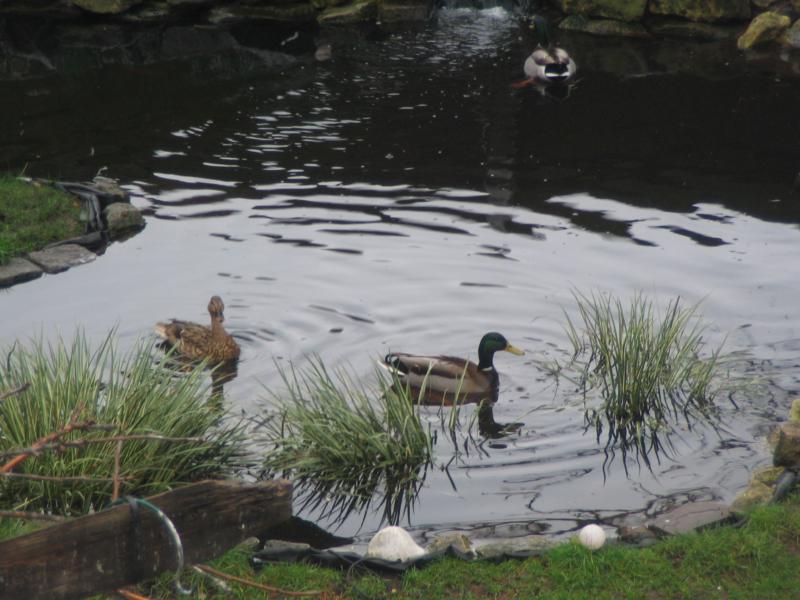
First visit from the mallards on 10th February 2009, while there still some snow
in the garden. This is about three weeks earlier than last year,
when the female did not arrive until 19th March 2008, so about five weeks earlier
this year. Almost certainly the same three mallards from last
spring.
At the time of writing in late March, no other ducks have visited the pond,
other than these three. Somehow, I hoped last year's seven
ducklings would fly back, but they probably have no idea how to find my garden,
and may not even have found each other, since they left
separately.
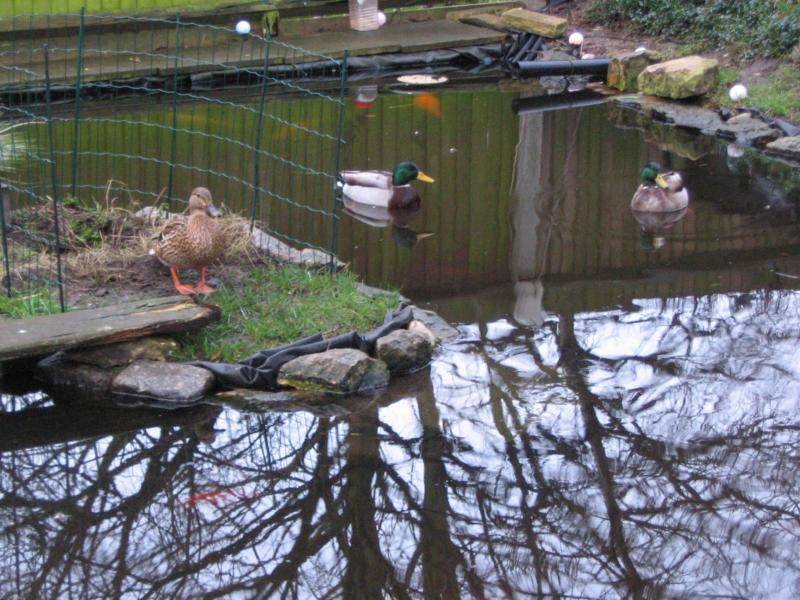
Second visit on 18th February 2009, in the week since the first visit I've dug a
deep nest hole on the island with a small raised bank around
the edge to
stop eggs being rolled out. I also put a fence around the most of the island to
stop the fox jumping over and to stop other ducks
racing across the nest.
The mesh should be large enough to allow small ducklings free movement on and
off the island. Amazingly, the
female immediately inspects the new nest and
sits in it, this photo is as she got off looking for food. The ducks have
flown back here for
several hours every day since.
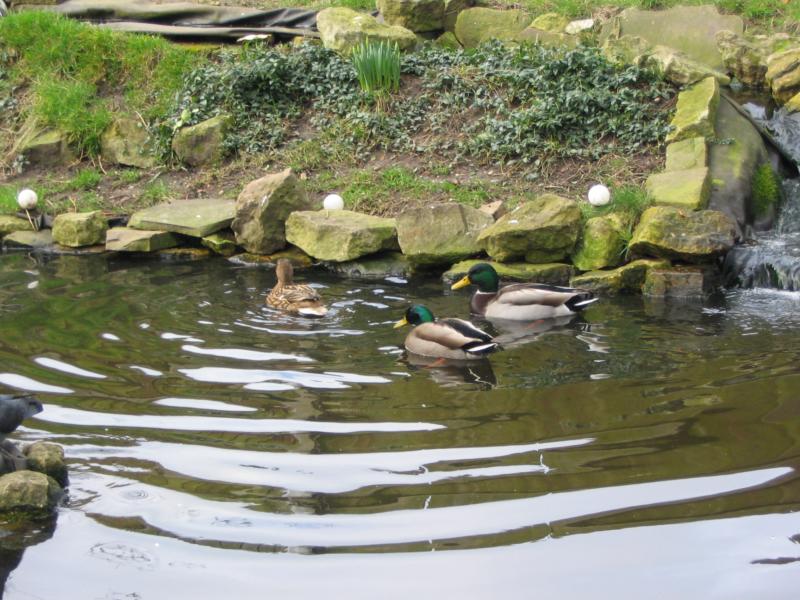
As
last year, the female has two mates, the slightly darker one in the foreground
is her main mate, the lighter one regularly gets chased
off and around the
pond.
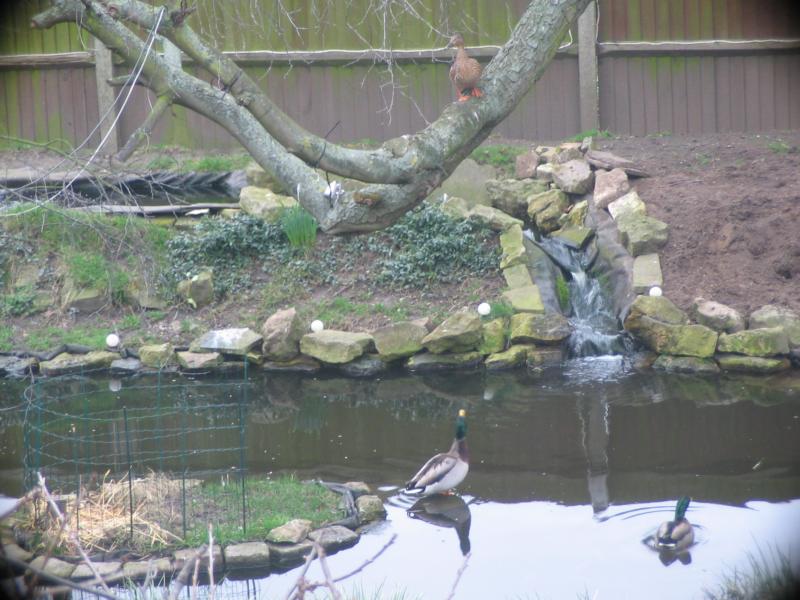
The
female viewing the pond from the tree branch, with her mate wondering what she's
doing. I've now put barley straw and leaves on the
island so she can
build a nest.
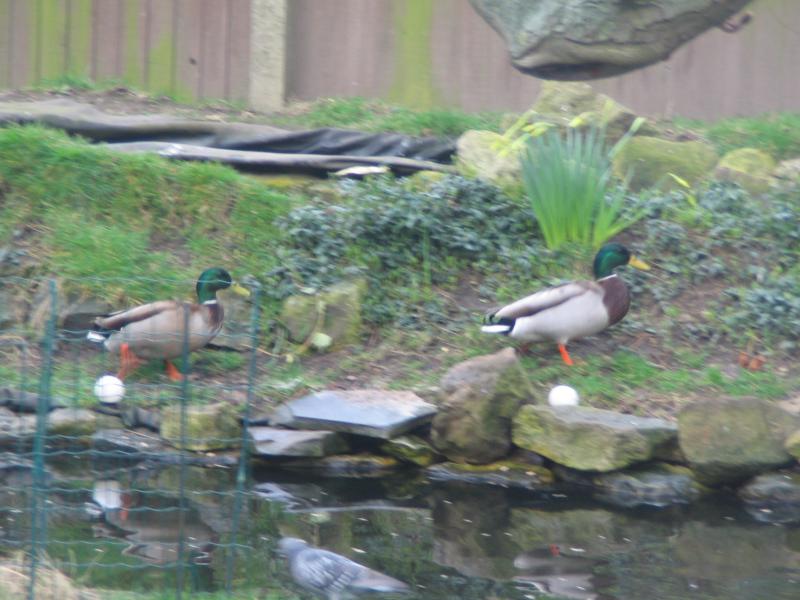
The darker male chasing the second mate around the pond, this can go on an hour or more. But I only saw them actually fighting once.
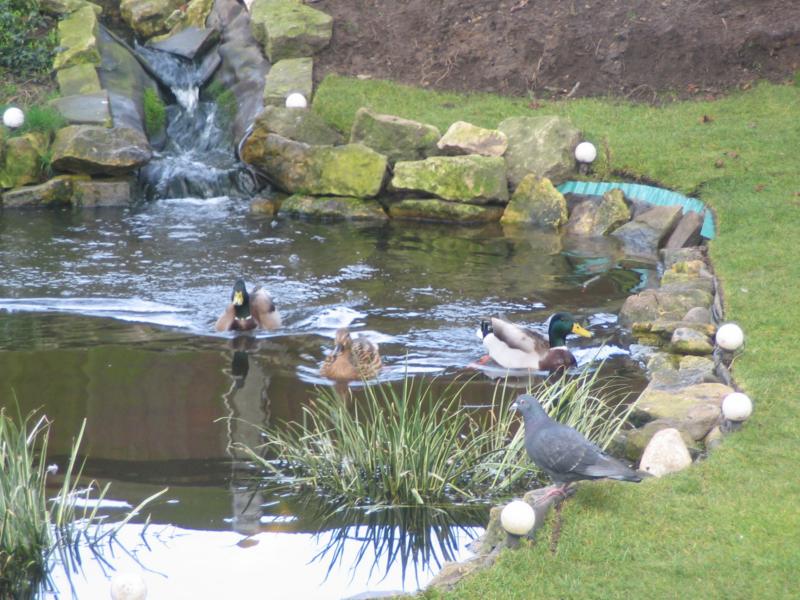
The
three mallards looking for food, shortly after I levelled the ground around the
pond, and laid new turf. It looks good now, but it's
sheltered by a
tree so don't know whether I'll be able to keep it alive all summer.
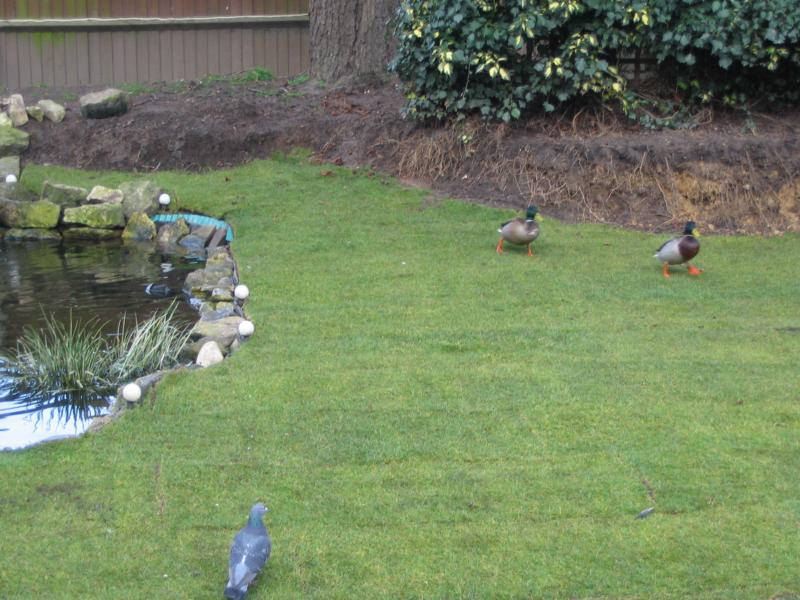
Another case around the new turf.
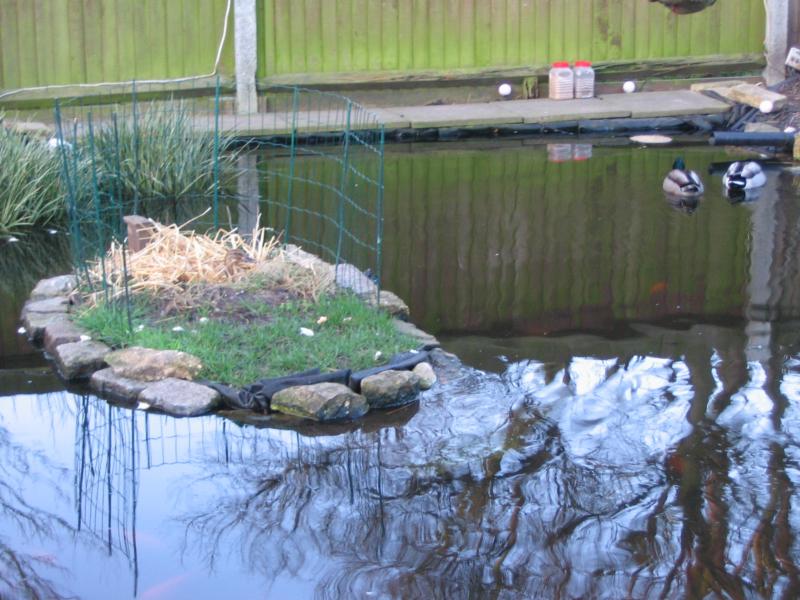
3rd March 2009, female sitting in her new nest on the island.
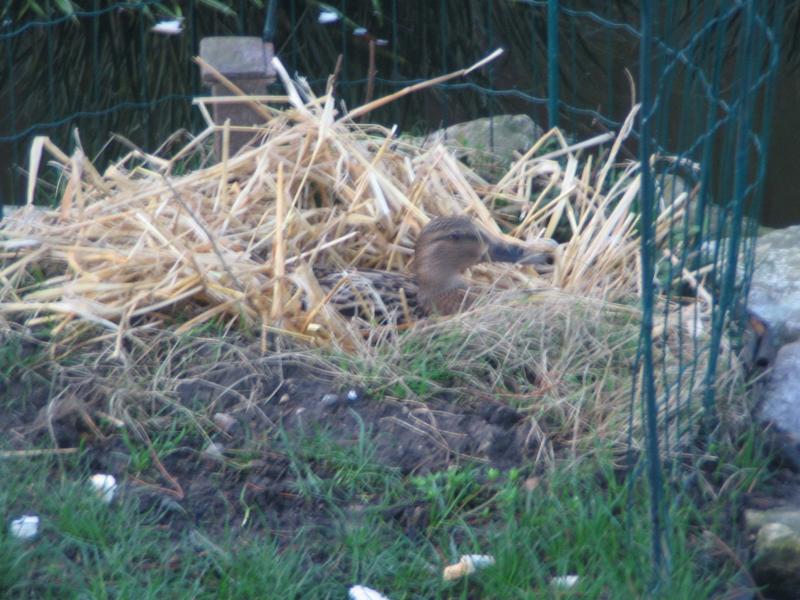
6th March 2009, laying her first egg. She now lays one new egg each day.
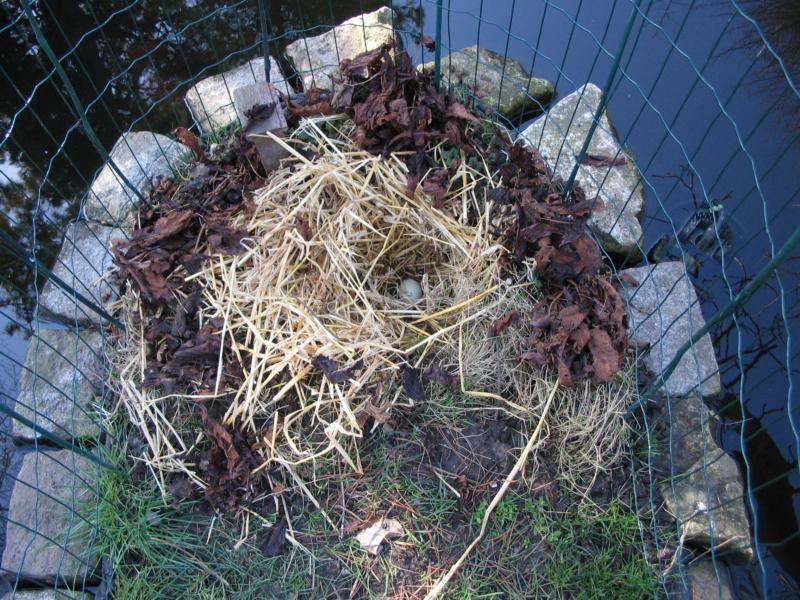
6th March 2009, the first egg in the nest, about six weeks earlier than last year when the first egg was 26th April 2008.
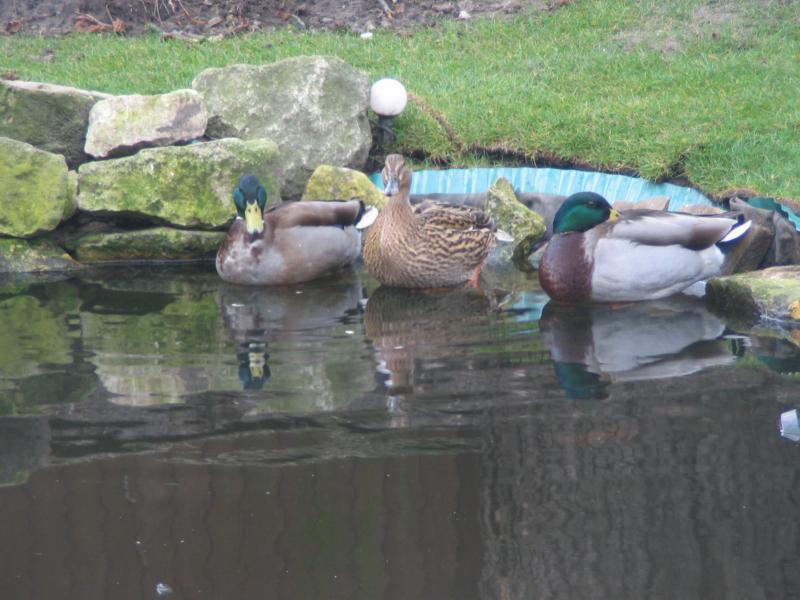
The three mallards on a pond ledge.
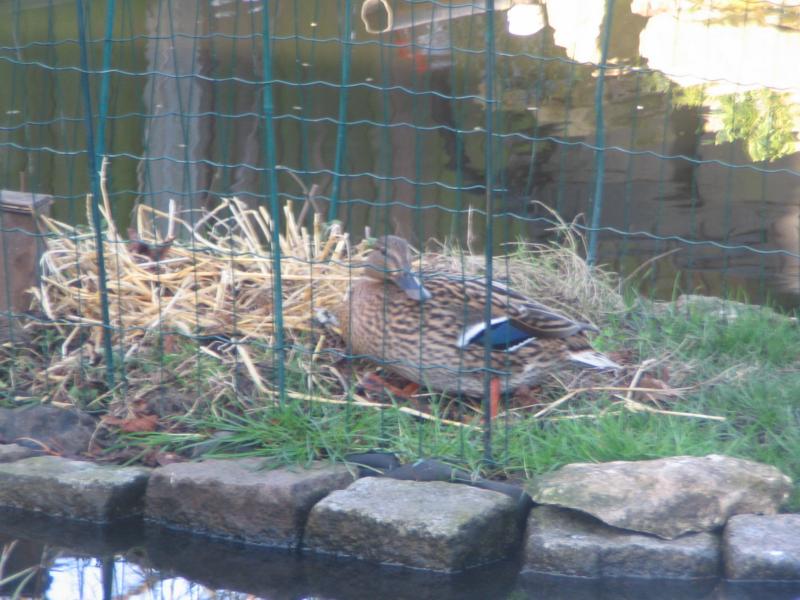
Getting back into the nest.
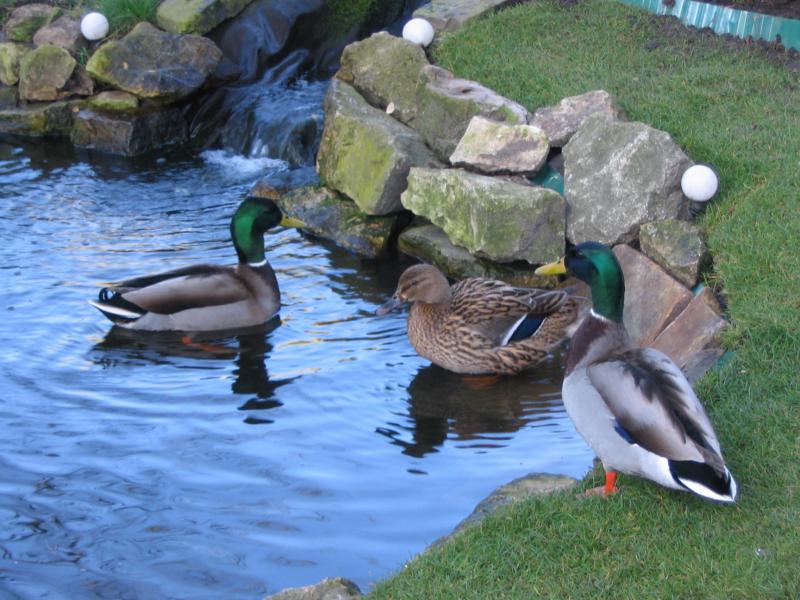
And back on the ledge.
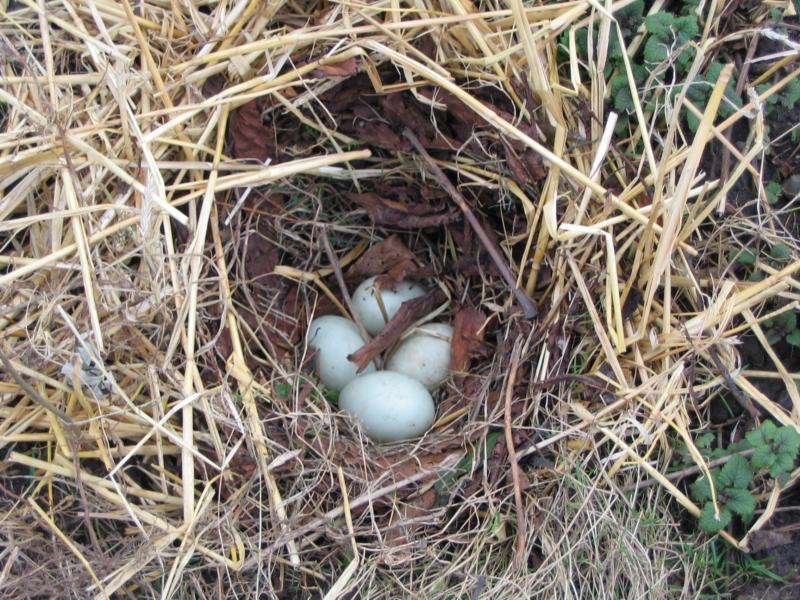
9th March 2009, now four eggs in the nest.
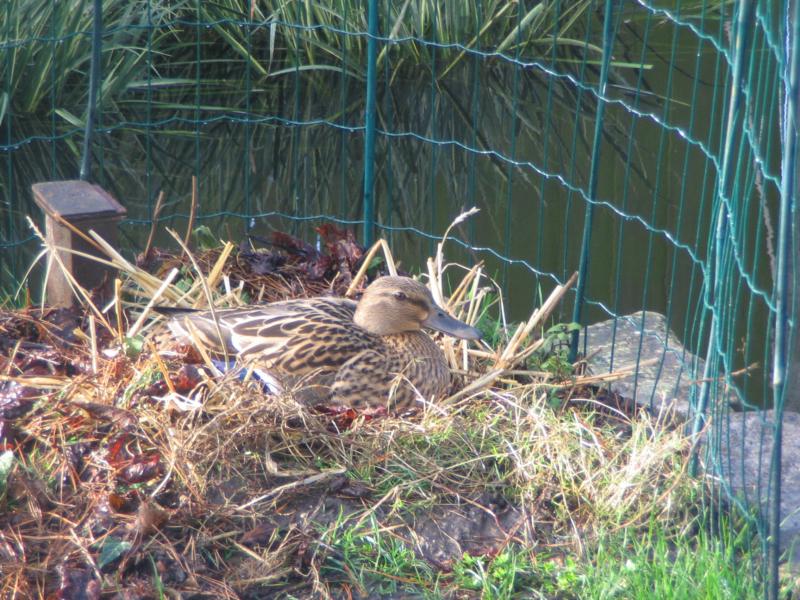
Although I dug a hole sufficiently deep that she keep he body below ground
level, most the straw and leaves now seem to be in the bottom
of the hole, so
she's sitting high. While laying, she only sits on the nest for two or three
hours each morning.
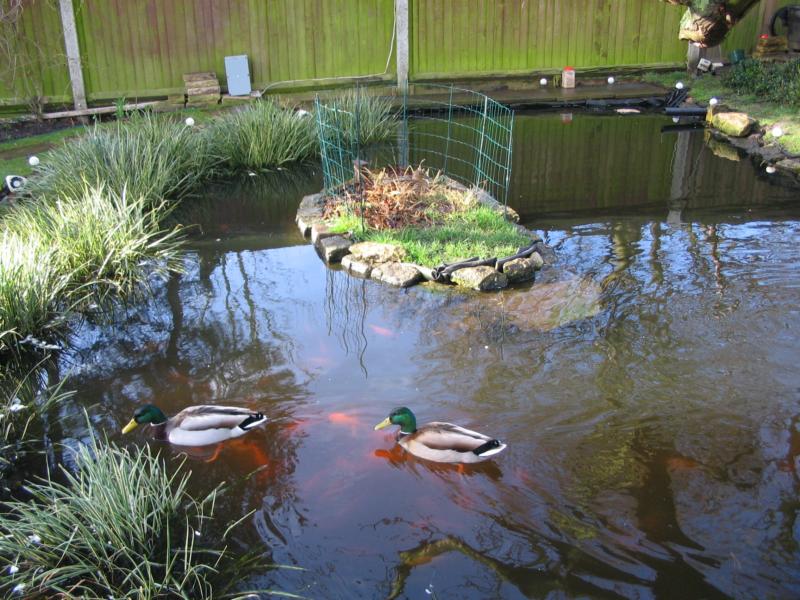
The two males are waiting for her to get off the nest.
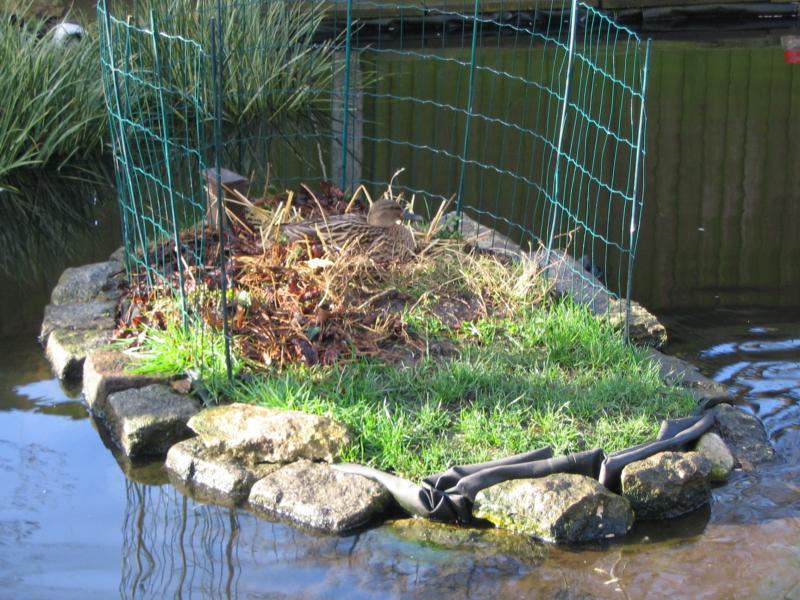
Still laying.
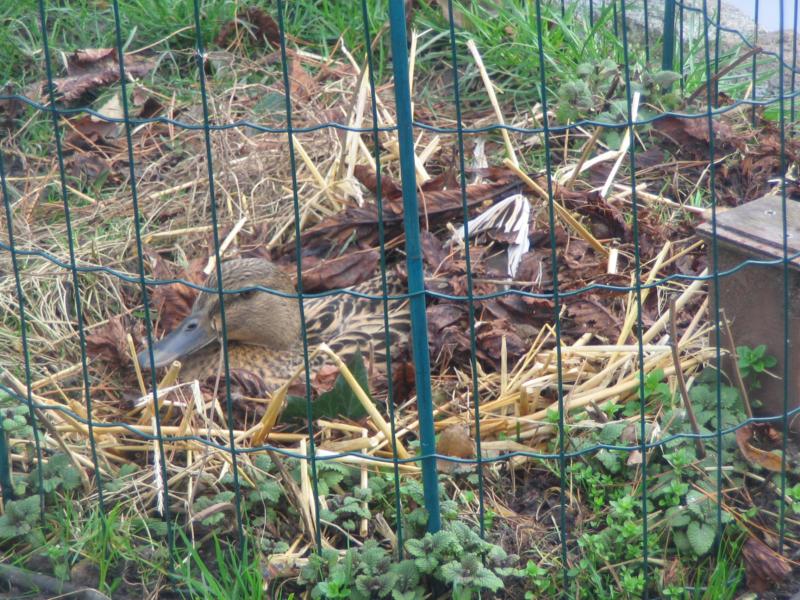
I've put more straw and leaves on the island, and she tries to cover herself with leaves while nesting.
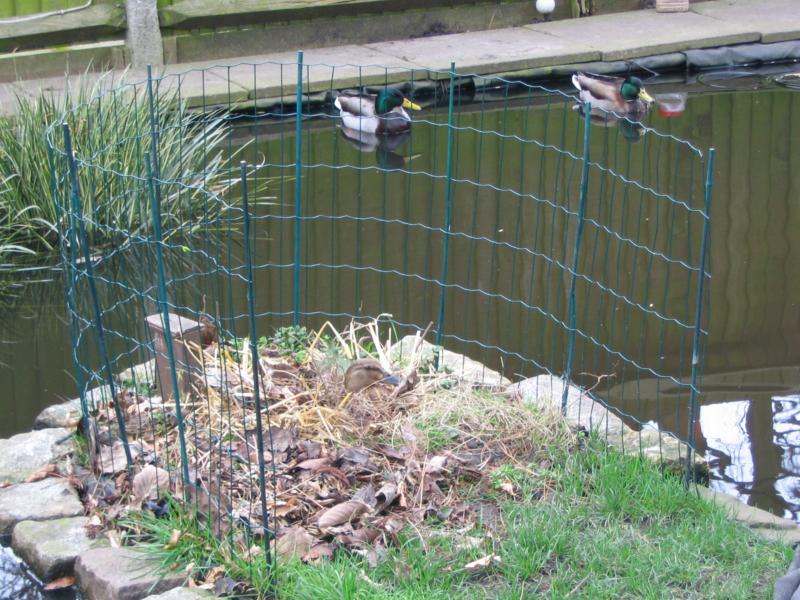
The males still patiently waiting. The fighting starts when it comes time to mate, with both chasing her around the pond.
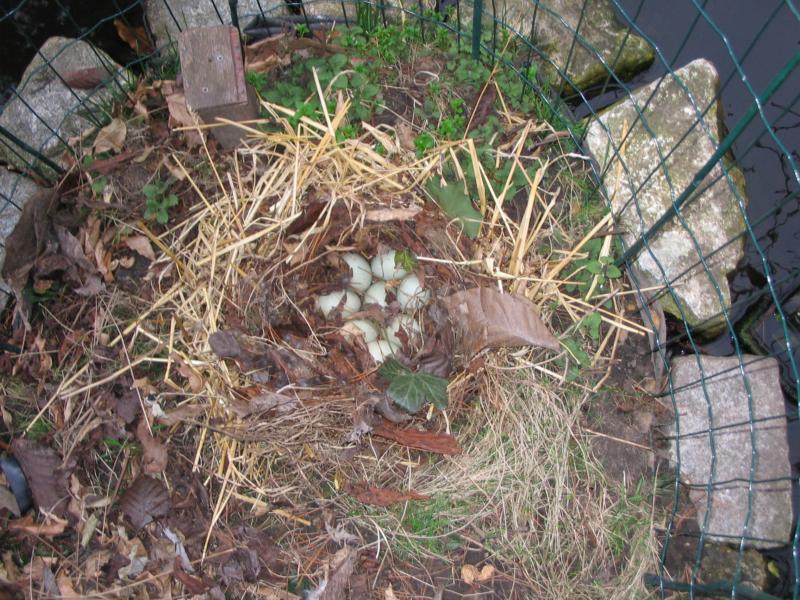
13th March 2009, now eight eggs.
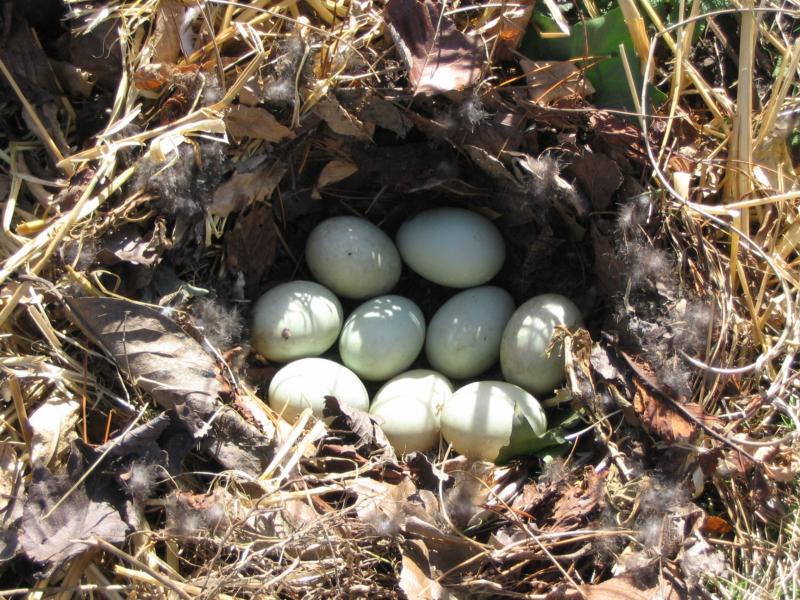
Closer view of the nest.
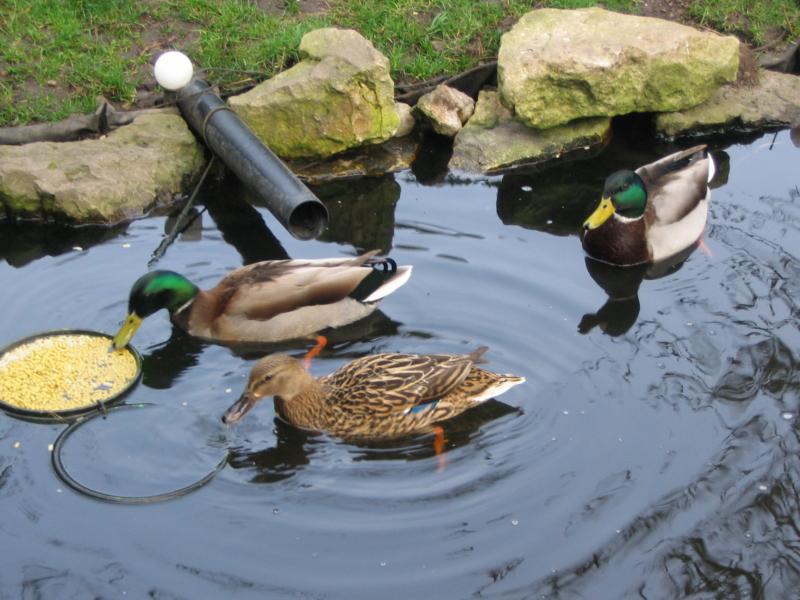
Eating the fish floating pond sticks. I'm not using the underwater duck food this year, since the waste poisoned the pond last year.
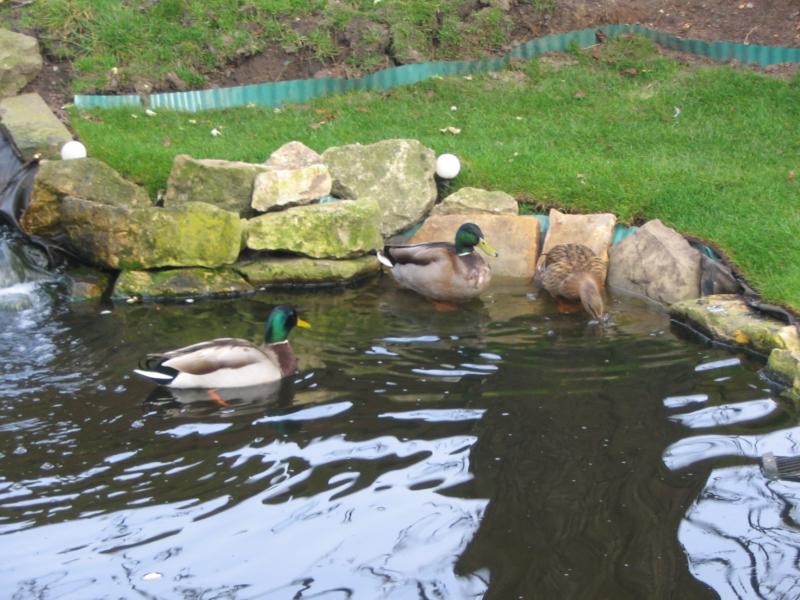
Back on their favourite ledge.
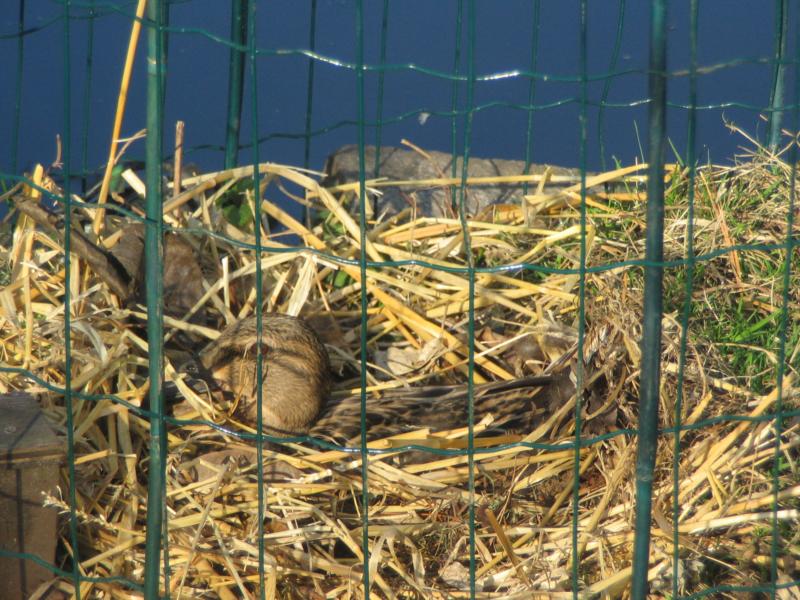
18th March 2009, more straw on the island, and now she is almost hidden. She has
started incubating her eggs, staying on the nest 24
hours per day, mostly.
There were 10 eggs two days before. Incubation takes 24 to 28 days, so ducklings
should be due from about
9th April 2009.
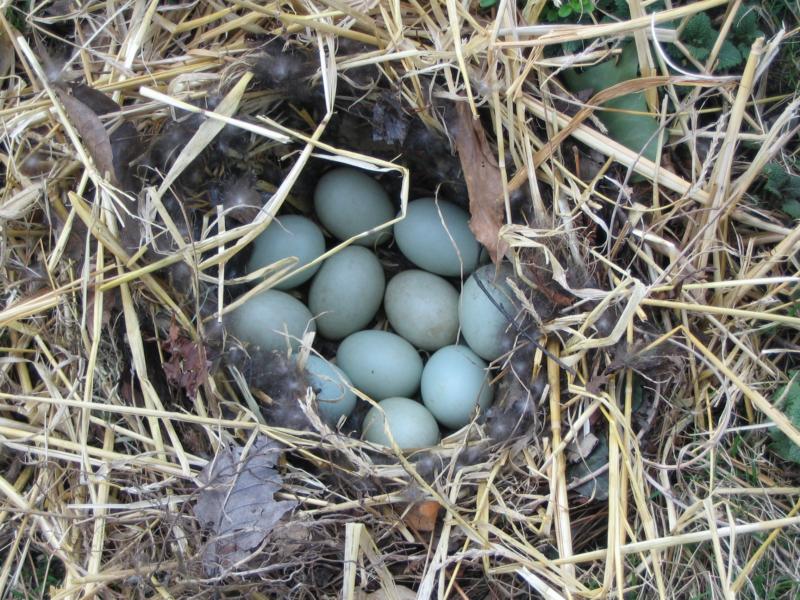
21st March 2009, there are now 11 eggs in the nest, laid over 12 days, and you
can see the down feathers she has plucked from her belly
so her skin is in
contact with the eggs. The two males are still visiting daily, and spending
several hours here, coming and going and once
or twice a day she flies off
with them for up to an hour, leaving the nest unattended. Usually she
covers the eggs with feathers and leaves,
but not always, which is how this
photo got taken.
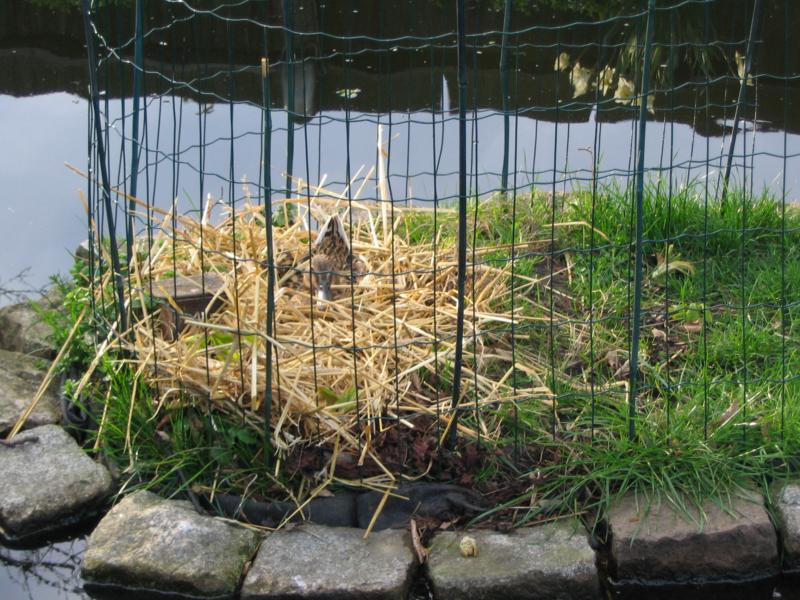
29th March 2009, sitting on her eggs.
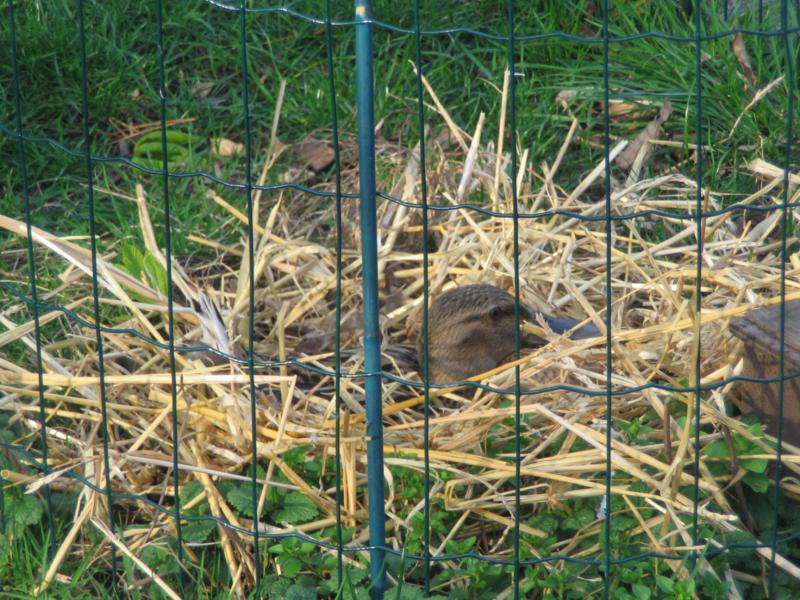
Almost buried under the straw.
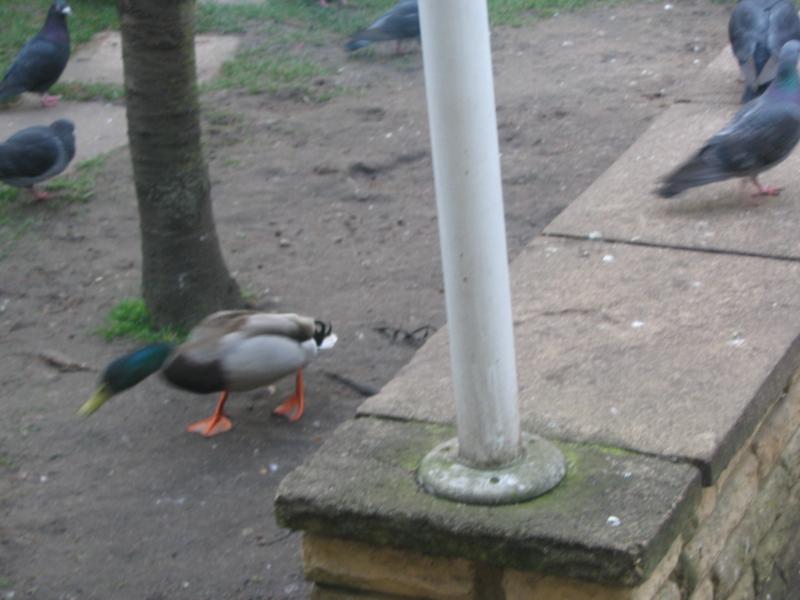
One
of the males always seems very hungry, and if he sees me at the kitchen window
comes padding down the lawn to wait near the patio
until I come out with some
bread. Some days, all three of them come running across the lawn to be
fed.
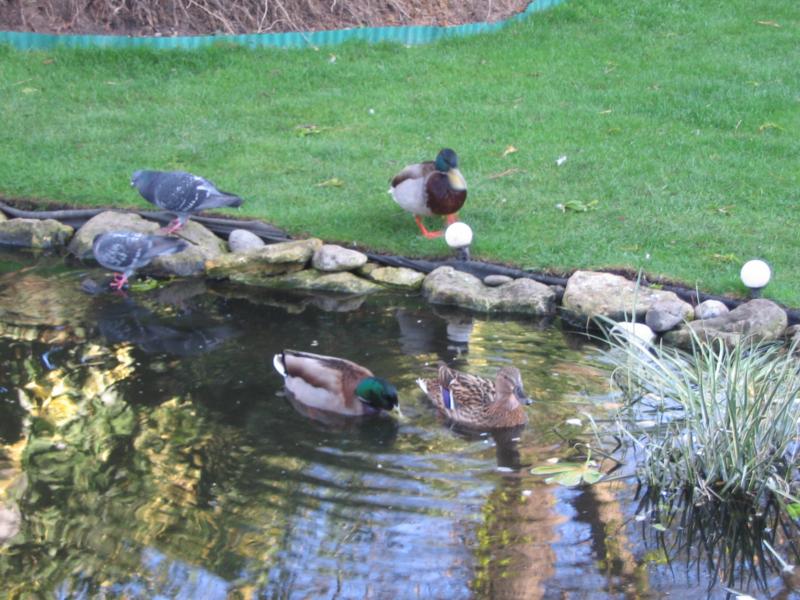
9.15am 30th March 2009, the female is off the nest to feed, and flies away for
an hour shortly afterwards with her mates. They now realise
the
breeding season is over, and are no longer attempting to mate with her, or fight
each other, although the second mate does keep a
distance from her first
mate. At least the males continual visits are keeping her company, and
hopefully they will protect her if more
aggressive ducks visit the pond.
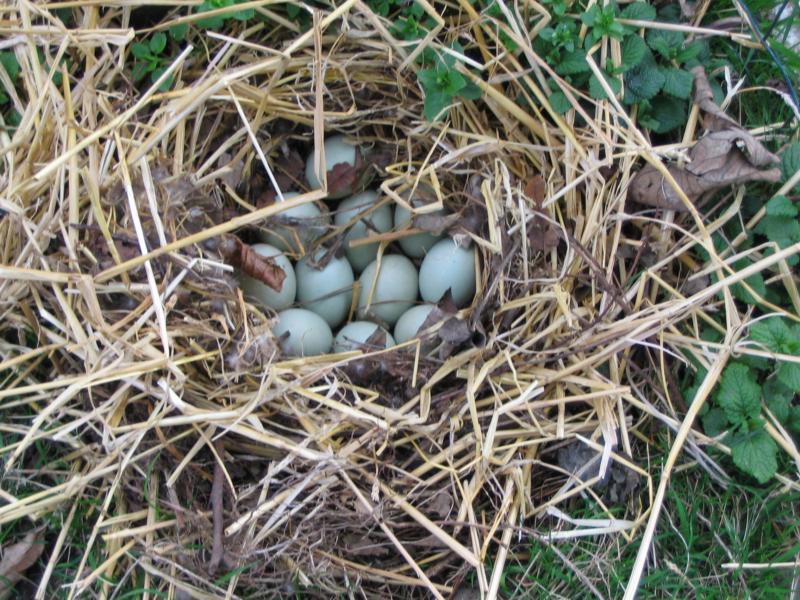
5th April 2009, still 11 eggs. I could feel heat radiating from the eggs.
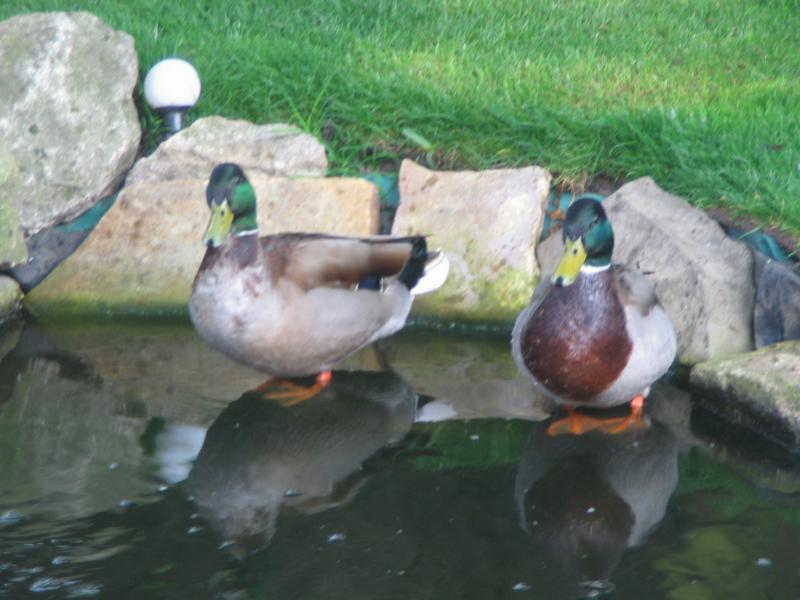
Her mates
keep returning to the pond, but have now stopped attempting to mate with her and
wait patiently for her to get off the nest
and spend some time together.
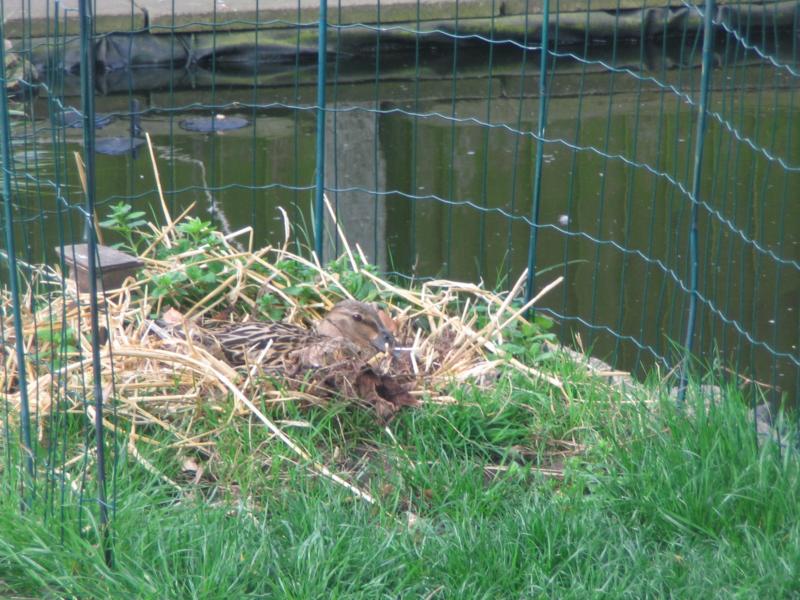
Quietly incubating her eggs.
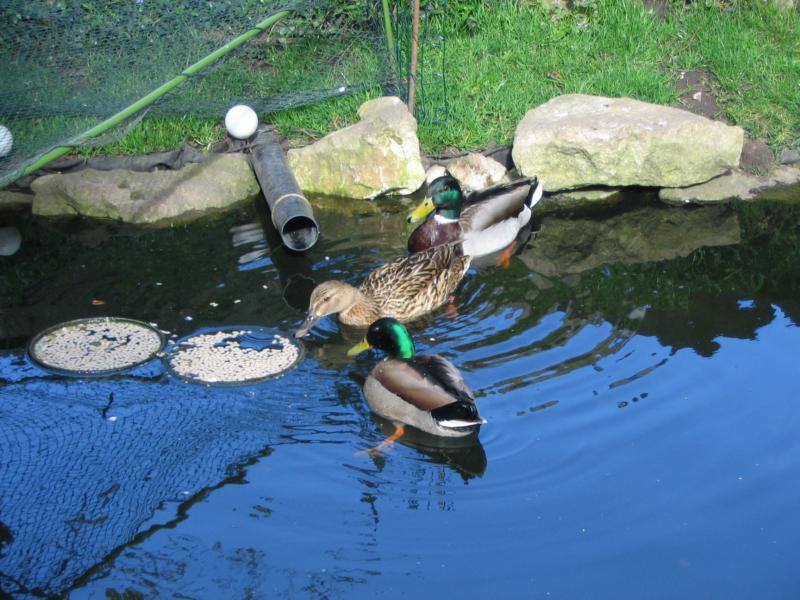
She is still leaving the nest for up to an hour at a time, once or twice a day, and flying away with her mates.
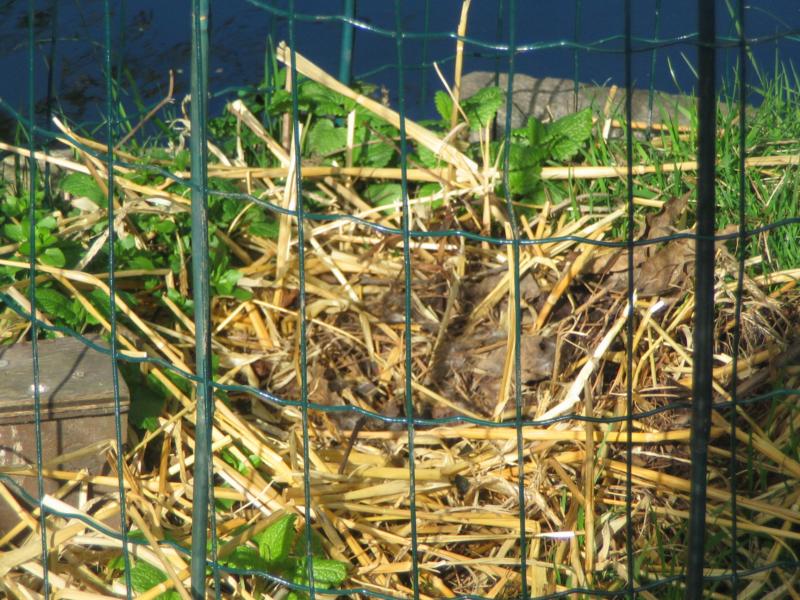
But she usually carefully covers the eggs with leaves, straw and down feathers to keep them warm.
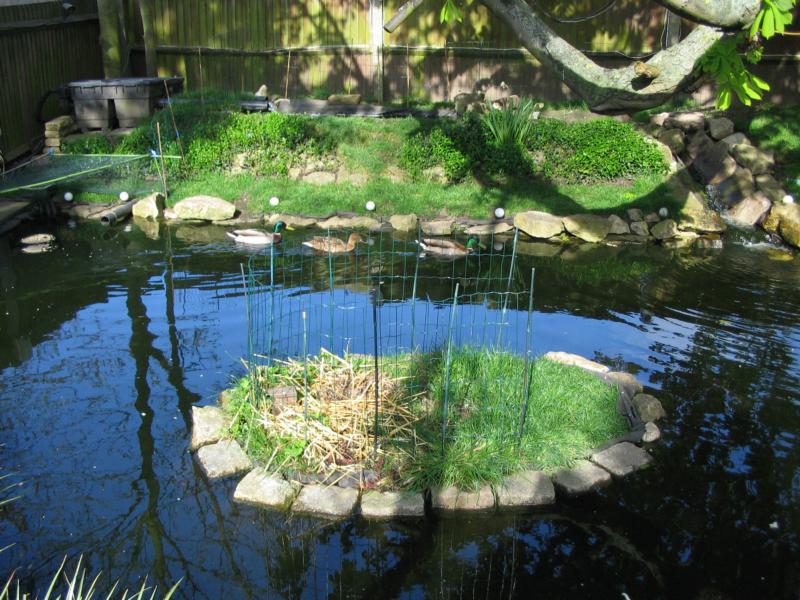
Taking some exercise.
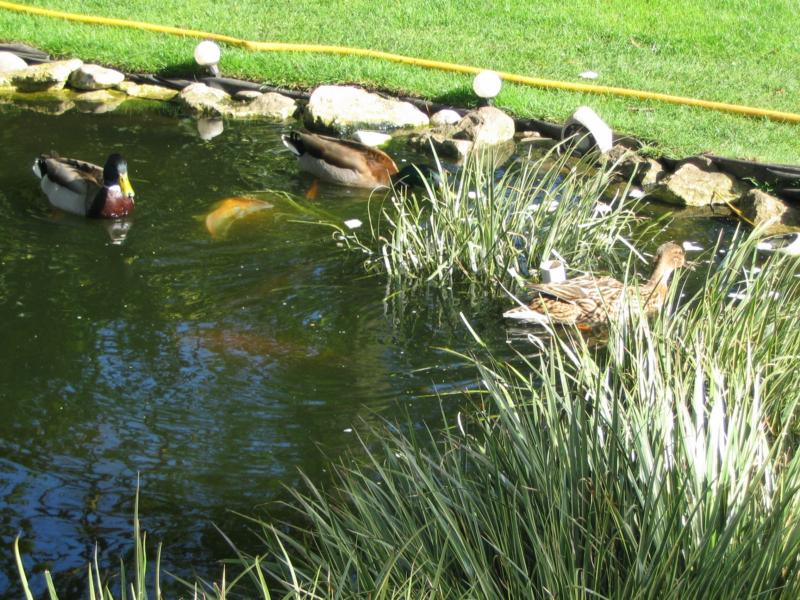
And feeding again. Mostly the males just watch, and let her feed first.
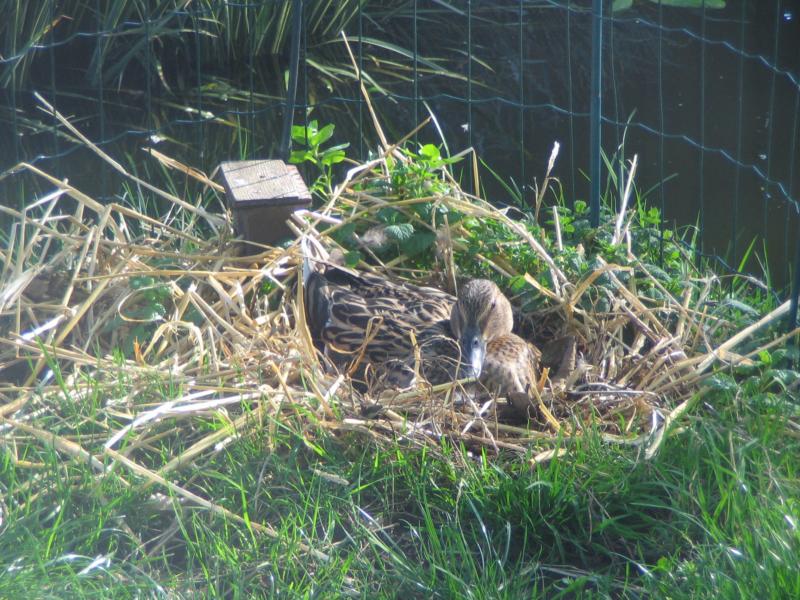
8th April 2009, 23 days after incubation started. Sitting low in the nest, on the eggs.
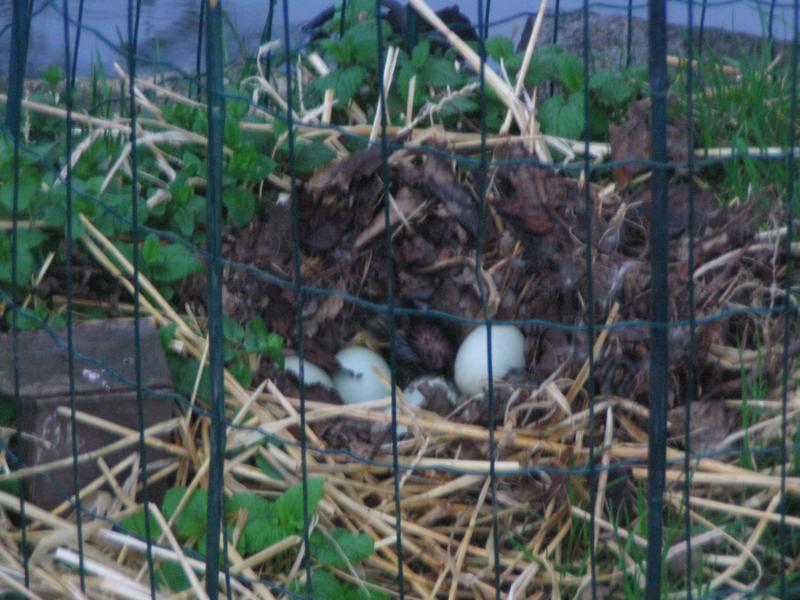
10th April 2009, 25 days after incubation started, the first eggs start to hatch
about 7pm in the evening, in the rain. I only discover this
because a
rogue male forces her off the nest by standing on the rock ledge beyond the
fence. Hard to see, but there is a duckling head
between the two eggs
at the back of the nest, there seem to be three hatched eggs.
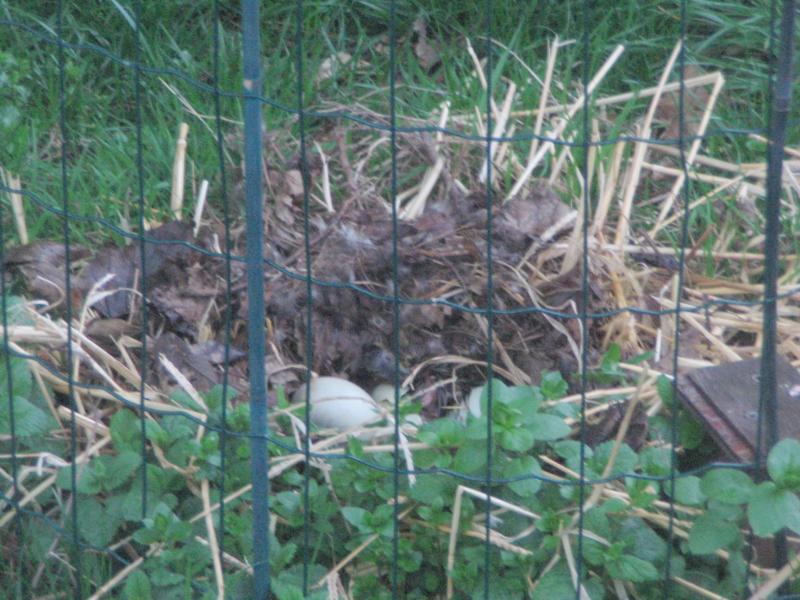
Another photo of the ducklings hatching.
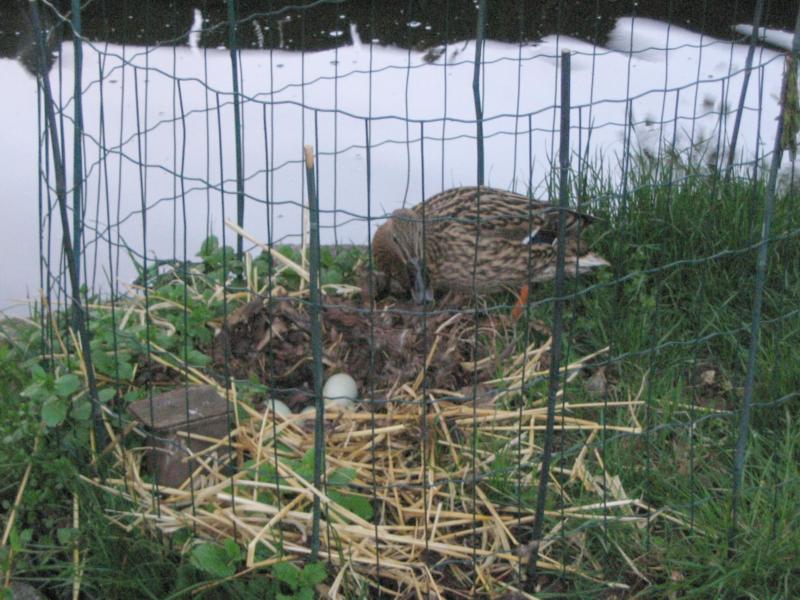
A few minutes later, the duck returns to the nest, to continue incubating the eggs and protecting the new ducklings.
Ducklings - 2009 has photos from 11th April when the eggs hatched.
All photos and text on this web site is © Copyright 2011-2022
www.croydonducks.co.uk and may not be reproduced, copied or linked
without prior written permission. All rights reserved.